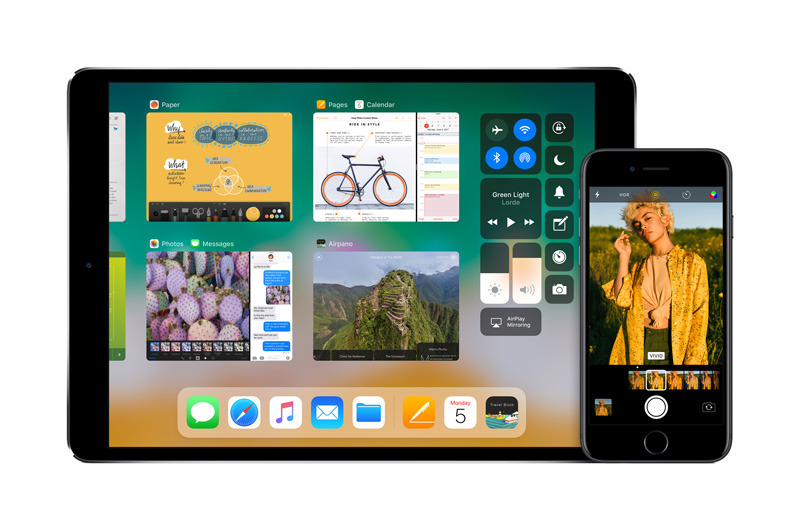Apple has released initial public betas iOS 11.1, macOS 10.13.1, and tvOS 11.1, giving the broader public a chance to test out new features and bugfixes.
All three releases are available to people registered with Apple's Beta Software Program. The iOS and macOS betas can be downloaded through normal update pathways — tvOS users must specifically toggle "Get Public Beta Updates" under the Settings app's Software Updates section, located under the System menu.
iOS 11.1 is so far believed to have relatively minor additions, like multiple emoji suggestions in predictive text, and a faster unlocking animation. No significant changes have been discovered in macOS or tvOS code, indicating that they're concentrated largely on bugfixes and closing any security vulnerabilities.
The first developer betas were released on Wednesday. Also made available at the time was a watchOS 4.1 beta, but Apple currently doesn't allow the public to run beta software on an Apple Watch, since that might "brick" hardware in a way that only Apple could fix.
 Roger Fingas
Roger Fingas








 Charles Martin
Charles Martin

 Malcolm Owen
Malcolm Owen
 William Gallagher
William Gallagher

 Christine McKee
Christine McKee
 Wesley Hilliard
Wesley Hilliard









4 Comments
When reading about a faster unlocking animation, it reminded me about the shutdown, and turn procedures and times.
it used to be that, and I’m talking mostly about iPads, because I very rarely shut my iPhone down, when swiping the shutdown “switch”, we would get a bright spinning spoke wheel. It would take a good two minutes to shut down. Maybe more, I never timed it, but it was long. Turn on was also long.
then, I’m pretty sure it was with iOS 10, the spinning wheel became dark, and hard to see. Shutdown times though, were shorter. So were turn on times. Because I rarely document these things, I can’t say if that happened with the beta of 10.3, when APFS first came out, or before.
now, with iOS 11, I don’t see any spinning wheel at all. When I first had to shut down because of a glitch, I was surprised, and couldn’t tell when it actually shut off, so I waited over a minute to turn it on again. Now, every time I shut it off, I wait a shorter amount of time. Yesterday, I waited all of 15 seconds. Turn on is fast too. Maybe it shuts off almost immediately.
i haven’t read about this anywhere. What experiences does anyone else have with this?
Does the 'taptic engine' have it's own processor, or is it controlled by the phone processor? i.e. does the feedback come from the phone/iOS or from the taptic engine, meaning it will 'click' as long as it's getting power
I understand totally that one missing feature can drive someone nuts, especially when you got used to it. But honestly, given the issues I face with iOS 11. It reminds me of my old iPhone 3s, when I installed the latest possible release on it. I run it on an iPhone 6, and not only has it become overall incredibly slow, hangs all the time like waiting for something to happen, but it is buggy as hell and likely the worst ever release. A good example comes with the intro of drag & drop. When I mark a word (red background) I can do nothing anymore, screen is just freezing and I can't place the cursor. I have to close the keyboard, and with a little luck the system responds again.
Though I understood it in the early days, where iOS came with packed features due to the pace of development, I have more trouble in understanding it these days. The iOS core should be very stable by know, the processors powerful enough to cater with current releases. I am really a big Apple fan and run my whole family on it, but these issues plus the still lack in flawless software workflows in a daily life let me lose some trust. I have put much hope in the software when learning Jony Ive took over software design, but he is unfortunately not taking as much care to it as he does on the hardware :-(